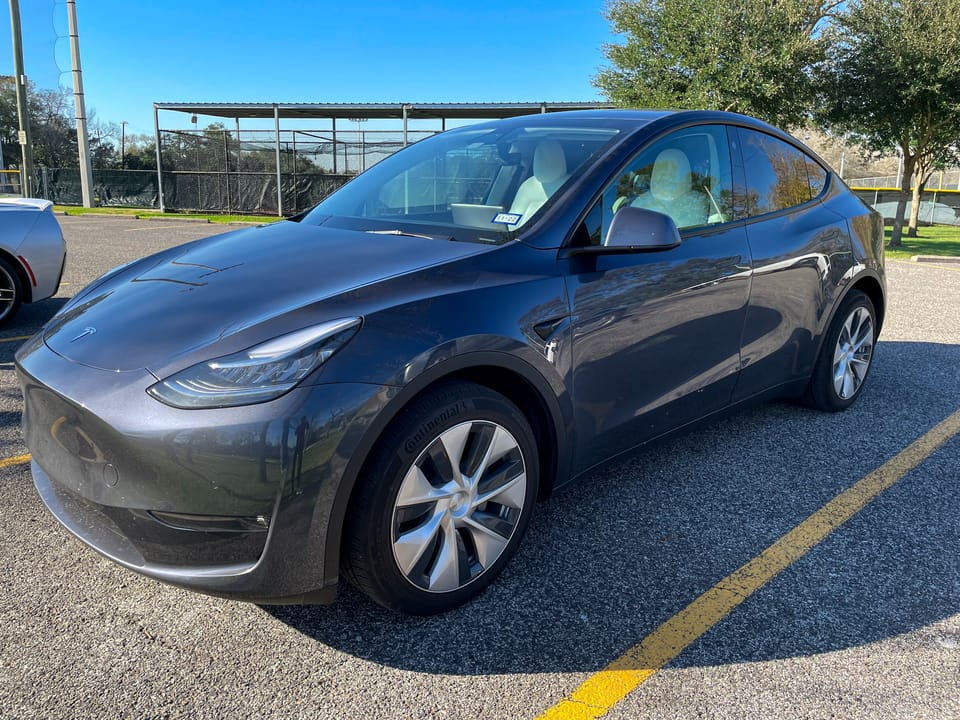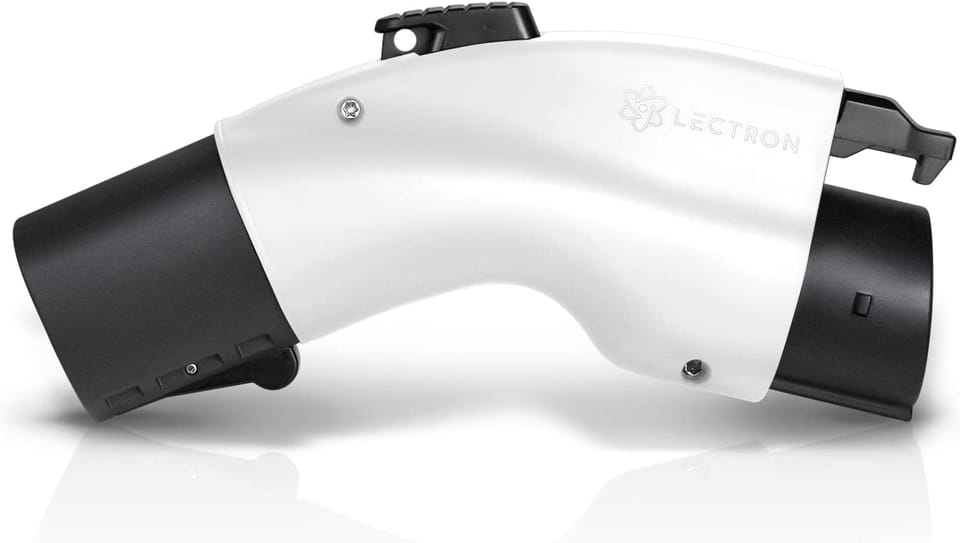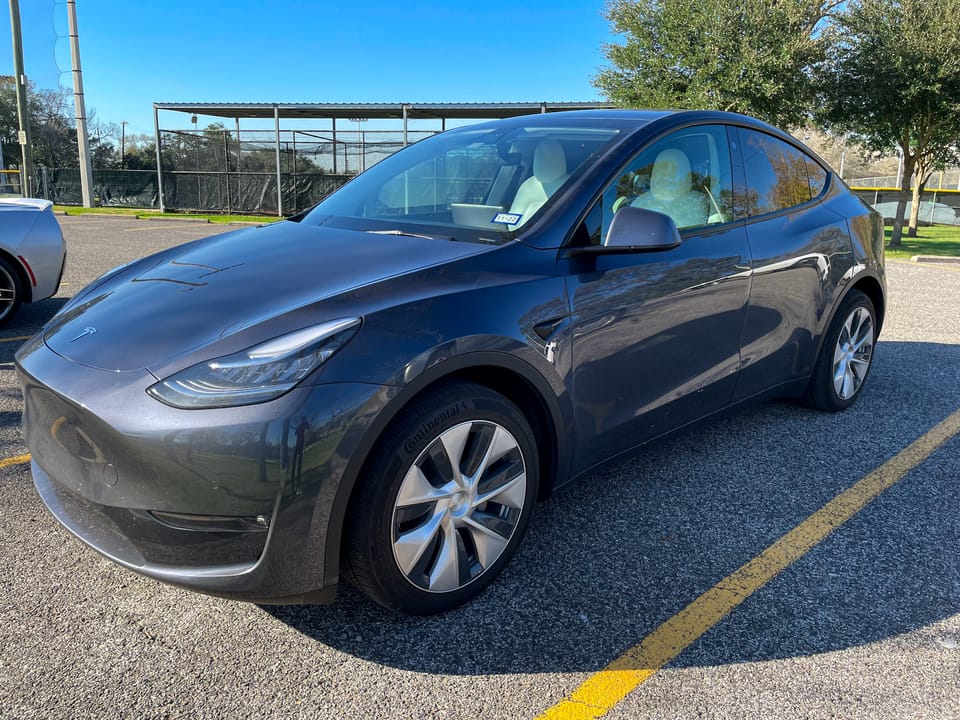Tesla Model Y vs ID.4 Pro S - 8 Differences Worth Considering
First impressions of ID.4 vs. Tesla Model Y. ID.4 blends in, feels premium, and comfortable. Tesla wins for tech and charging infrastructure.

As a new owner of a 2023 ID.4 Pro S and an existing owner of a 2022 Tesla Model Y, here are my first impressions of the car and 8 differences worth considering.
First impressions
Teslas stick out in any parking lot or garage. ID.4s, while having their own quirky looks, blend in a little more with the cars around them. To the untrained eye, it looks like it could be a Taos or a Tiguan. It's not until you get a closer look at the ID.4 branding and slick interior that you know you're looking at something different.
While looks are subjective, I think the ID.4 does a better job of fitting in with the crowd. It doesn't scream "ELON" and just looks like a nice, midsize SUV. So, if not calling attention to yourself in public is something you're seeking, the ID.4 is a great choice. The Tesla? Not so much. Owning a Tesla comes with some baggage and even if you don't agree with most of it, it's still something you have to deal with.
Which do I like better?
It's not a clear-cut answer. Personally, I'll take the Tesla over the ID.4 if I had to choose today. The Model Y is much more customizable and satisfies my constant tech itch. The car zips and the charging infrastructure is available and reliable.
BUT, I can't say enough great things about the ID.4. The drive is so smooth. The first thing I noticed is how much quieter the drive is and how soft the suspension feels. The interior feels premium and what I had hoped the Model Y felt like. The turning radius caught me by surprise because now I can make u-turns in tighter places that I would never consider with the Model Y. Parallel parking with the ID.4? Unparalleled.
Comfort-wise, ID.4 wins. I can't wait to take longer trips with the massaging seats and while the tech isn't what you'd find in a Tesla, Apple CarPlay does make up for a lot of it. The car feels familiar and welcoming and it's not as big of a design shock as the Model Y.
At the end of the day, it really does come down to charging. If it weren't for the state of public charging infrastructure as of today, April 2023, it'd be ID.4 day, every day.
But enough of my thoughts. Here are some things you should consider looking at ID.4 and any other EV.
1. Really understand why you want an EV
While there are more EVs in the market now than there were a few years ago, the EV market is still maturing, and as a somewhat early adopter, you want to be conscious of the vehicle you're buying its benefits and its limitations.
If you plan on taking long road trips, range, and charging infrastructure might be prioritized at the expense of cost and size of the vehicle.
If you just want an EV as a daily commuter car, you might be okay considering a vehicle with a lower range if it results in a lower overall cost.
When we bought our Tesla, the main thing we had in mind was being able to drive 80 miles/day (400/week) comfortably and be able to charge at home. We also wanted to take a handful of ~200-mile road trips a few times a year, so charging infrastructure was also important. In 2021, the only real option was a Tesla Model Y.
2 years later, though, my wife and I are finding ourselves driving around town, either to drop off our kiddo at school, drive to the office or drive around town. For those scenarios where we know we won't exceed our ~280-mile range, the ID.4 made sense. Additionally, my wife has needed to drive long stretches for her job, and having an EV made sense for that as well.
Would we consider taking the ID.4 on a road trip? Perhaps, but as of today, I know that would require a lot more planning, and because we'd be traveling with a toddler, riding in the Tesla means charging is one less thing I have to worry about during our trip.
2. Understand the charging infrastructure
If you're new to EVs, you must know that Tesla and non-Teslas have different charging infrastructures. Tesla owns and operates numerous SuperChargers across the country, making it easier, almost effortless, to plan your routes. Non-Teslas, on the other hand, depend on public charging networks that are often unreliable and difficult to navigate.
Luckily, Tesla is opening select Superchargers to non-Tesla EVs, a move that will make it a lot more feasible to take non-Tesla EVs on longer road trips. However, there are still some kinks to work out. The most interesting one, to me at least, is the length of the charging cable. Non-Tesla EVs have their charging ports in different locations, meaning that the cable may not be long enough to charge certain EVs. In the video below, you'll see just how close Tom Moloughney's F-150 Lightning had to get to the charger to be able to plug in.
3. Learning the EV lingo
Once you start considering or researching EVs, you'll notice there's a myriad of words that you've never heard of. SoC, charging curve, battery capacity and architecture, J1772, CCS, CHAdeMO, Level 1 and Level 2 charging, DC fast charging. It can be overwhelming. I'll include some definitions below to get you started.
- State of Charge (SoC) - your EVs current battery %
- Charging curve - describes how fast your car charges, in kW, over time. Generally, this is considered when using DC fast chargers because your EV may charge faster at certain SoCs. This all depends on the DC fast charger you use and your vehicle's battery capacity and architecture.
- Battery capacity - describes the gross or usable capacity of your EVs battery (e.g. 75kw gross, 72kw usable capacity) Larger battery capacities often mean better range and performance, but it varies. For example, the Hummer EV has a 212kw usable battery pack, but it's also a Hummer.
- J1772 - this is the connector used to charge many non-Tesla vehicles. In the US, you'll see a few connector types: Tesla, J1772 (majority of non-Tesla EVs will have this charger), CCS (used for fast charging), and CHAdeMO (slowly being phased out)
- CHAdeMO - this is an older charging connector that is slowly being phased out. You'll mostly see this on older Nissan Leafs, for example
- Level 1 and Level 2 charging - Level 1 is what you would expect when you plug directly into a standard home outlet. Level 2 charging is faster home charging that usually consists of hard-wiring a charger or installing a 30 or 50amp, 240V outlet.
- DC fast charging - these are your EVGo and Electrify America stations. DC fast charging is what you would rely on for longer road trips where you need to charge in a shorter period of time.
- Charging adapters - welcome to the EV dongle-life. Depending on what's in your garage, you might find yourself shopping for a Tesla to J1772 adapter or a CCS to Tesla adapter
There's a lot more but this should be enough to make you dangerous. Follow some of the links I've included in this post and you'll find yourself among the brightest EV minds on the internet.
4. Charging speeds - YMMV, literally
If you're driving consists of daily commutes and home charging, charging speeds might not matter as much. But if you intend on relying on public fast charging or going on road trips, it's important to understand your vehicle's charging speeds.
For Teslas, it's much easier to understand. Most new Teslas can charge up to 250kw if you're using a V3 Supercharger. And if you charge at a V2 Supercharger, you can see peak speeds of up to 150kw. Because Tesla owns the Supercharger network, there's not much to think about. You find a Supercharger, plug it in, grab a bite to eat, and by the time you're checking out, your car is ready.
The ID.4 supports max charging speeds of 135kw, but you need to charge at the right charger and at the right time to make this happen, and with the state of public charging infrastructure, it's not as easy. I am noticing more Electrify America and EVGo stations open up, but many have shared their experiences online and faulty, broken, unreliable chargers don't spark the confidence I need when taking my family away from home for an extended period of time.
5. Cargo space
Probably the most practical feature of my Tesla Model Y is the front trunk. I use that thing daily to store my backpack, the kiddo's diaper back, groceries, gifts, packages, and even our Away carry-on. It instantly increases the cargo space in the vehicle because it means I can fit even more things into the trunk.
The ID.4... doesn't have a front trunk, which just makes me sad. The trunk space is respectable but I really don't like not having a front trunk. Luckily, this is my wife's daily driver and most of the things they need to store for work and her daily commute end up in the trunk anyway.
If you're new to EVs, a front trunk might not seem like a deal breaker. But once you have one, it's hard to go back.
6. Driving preferences
Not all EVs are created equal. There's a lot more to the driving experience than battery vs gas and it's important to take that into consideration when looking at EVs. Before I drove the Tesla, I drove a Camry, the defacto immigrant family's car of choice. When I moved to the Tesla, the driving profile was much different, and took a bit for me to adjust. It was zippier, quick, responsive, and fast. I'm not one to take my car to a track, but I have grown to appreciate the performance of my Model Y.
So much so, that it was impossible not to notice the lack of performance features on the ID.4. It zips, but not as fast. When you press down on the accelerator, it's less responsive than the Model Y. It's a more tame accelerator that still gets you where you need to be, just without the adrenaline rush. And you know what? That's fine. Because not everywhere needs or wants 0-60 in 3.5 seconds.
7. Interior preferences
The Model Y's minimalist interior can be a drastic change to many. It was a welcome change for me because I always felt interiors that had a bunch of unused buttons and dusty displays were a bit cluttered. While comfortable, it doesn't feel like the luxury interior you would expect from an almost $60,000 vehicle. There are a lot of areas that feel like cheap plastic and while the white seats are super cool, they're also super plain.
The ID.4 on the other hand introduces some of those traditional interior buttons, albeit capacitive buttons, but the interior feels much more like what you would expect from a higher-trim vehicle. The gray leather seats have very nice navy accents and are comfortable to sit in for long periods of time, especially with the massaging function. Even though it's a VW, if you closed your eyes for a bit, while parked, of course, you can fool yourself into thinking you're in an Audi.
I definitely prefer the comfort and interior of the VW.
8. Purchasing process
The purchasing process was similar for both the Model Y and ID.4. I built my car on the manufacturer's website, paid a deposit, and placed my order. For the Model Y, I chose a delivery center near my house and for the ID.4, I chose the nearest VW dealer. The main difference is you are buying your Tesla directly from Tesla, whereas the ID.4 is being purchased from a dealer, which means there are more chances of dealer shenanigans.
Luckily, our VW dealer was super chill and did not upsell us on anything. The price I saw online when I ordered was the price we paid, not including taxes, fees, titling, etc. In terms of actually buying and paying for the car, the only difference was that the VW dealer handled the titling and collected the sales tax on the vehicle. Since Tesla delivery centers aren't dealers, at least in Texas, they did not collect sales tax and provided the necessary paperwork I needed to take to the DMV myself to finalize the titling and registration.
I'm sure that saved me a few bucks but it also took time out of my day to go through all the paperwork.
Final thoughts
Buying an EV, even today can be an overwhelming undertaking. It's important to do your research before placing an order or visiting a dealer but regardless of the EV you choose, it's sure to be a lifestyle change (for the better)!



